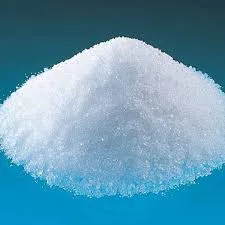Chemical Adhesives The Role of Hydroxypropyl Methylcellulose (HPMC)
In the realm of industrial and consumer applications, chemical adhesives play a pivotal role in uniting various materials and ensuring structural integrity. Among the myriad of adhesive types available, Hydroxypropyl Methylcellulose (HPMC) stands out due to its unique properties and versatility. This article explores HPMC's characteristics, applications, and significance in modern adhesive formulations.
What is HPMC?
Hydroxypropyl Methylcellulose is a non-ionic cellulose ether derived from natural cellulose through chemical modification. It is characterized by its properties such as water solubility, film-forming ability, and thickening capabilities. The modification process enhances its performance, making it an essential component in many adhesive formulations. HPMC is widely recognized for its ecological safety, as it is non-toxic and biodegradable, which aligns with the burgeoning demand for sustainable materials in both industrial and household applications.
Key Properties of HPMC
HPMC exhibits several essential properties that make it an ideal choice for adhesive applications
1. Water Retention One of HPMC's most significant advantages is its ability to retain water, which contributes to enhanced adhesion and improved workability during application.
2. Viscosity and Texture HPMC can modify the viscosity of adhesive formulations, providing the desired thickness and preventing sagging or running during application.
3. Film Formation Upon drying, HPMC forms a flexible and transparent film, enhancing the aesthetic properties of the final product and offering additional protection to the adhered layers.
Applications of HPMC in Adhesives
chemic adhes hpmc

HPMC is incorporated into various adhesive formulations across multiple industries
1. Construction In the construction industry, HPMC is widely used in tile adhesives, wall putties, and mortar formulations. Its water-retaining properties help improve bonding strength and reduce the risk of cracking.
2. Paper and Packaging HPMC is utilized in adhesives for paper products, providing good tack and ensuring secure bonds for packaging materials.
3. Wood and Furniture In the woodworking sector, HPMC-based adhesives offer excellent bonding characteristics and are particularly beneficial for laminated products.
4. Personal Care Products HPMC’s film-forming ability is valuable in cosmetics and personal care products, where it serves as an adhesive agent in topical applications.
Environmental Considerations
As industries increasingly pivot towards sustainable practices, HPMC emerges as a green alternative to traditional adhesives containing harmful solvents and chemicals. Its biodegradability and non-toxic nature make it an attractive option for manufacturers seeking to reduce their environmental footprint.
Conclusion
The versatility and unique properties of Hydroxypropyl Methylcellulose make it a vital ingredient in the formulation of chemical adhesives. Its ability to improve bonding, ease of application, and environmental safety positions HPMC as a preferred choice across various industries. As technology evolves and the demand for eco-friendly products surges, HPMC is likely to play an even more significant role in the future of adhesive applications, driving innovation while promoting sustainability.
In summary, Hydroxypropyl Methylcellulose is not only a functional component in adhesive formulations but also a product that aligns with global efforts toward sustainability and environmental responsibility. As industries continue to explore new materials and methods, HPMC stands out as a reliable solution for adhesive applications, proving essential in both current practices and future developments.
-
Rdp Powder: Key Considerations for Wholesalers in the Building Materials IndustryNewsJul.08,2025
-
Key Considerations for Wholesalers: Navigating the World of Hpmc - Based ProductsNewsJul.08,2025
-
Hpmc Detergent: Key Considerations for WholesalersNewsJul.08,2025
-
Key Considerations for Wholesalers: China Hpmc For Tile Adhesive, Coating Additives, Concrete Additives, and MoreNewsJul.08,2025
-
Crucial Considerations for Wholesalers: Navigating the World of Construction MaterialsNewsJul.08,2025
-
Key Considerations for Wholesalers Sourcing Additive For Cement, Additive For Concrete, Additive For Putty from Additive Manufacturer Shijiazhuang Gaocheng District Yongfeng Cellulose Co., Ltd.NewsJul.08,2025




